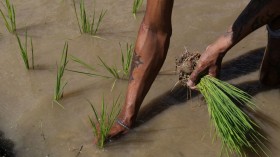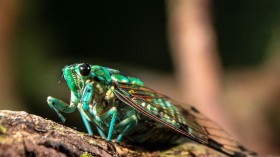According to a video uploaded Tuesday by Latest Sightings, a young elephant's mother was temporarily "unaware" of her little one's struggle along a riverbank, but the herd matriarch was there to step in.
Elephant Matriarch Stepping In
In Botswana, the matriarch pushed the peewee pachyderm up the slope with her trunk.
"We all know that elephants are compassionate and help each other, and the matriarch of the herd came to the rescue, making sure no one was left behind!" commented wildlife videographer Kim Wolhuter in the description of the video.
Is it just us, or did the matriarch seem to mug for the camera, as if to say, "Yeah, the kid is cute, and I did a nice deed"?
Female Elephants Assisting Each Other
Female elephants (cows) assist one another in caring for their babies. Elephant development is aided by babysitting other females' calves; young females learn how to care for their young, and they are shown how to do it. When there are more females around and willing to care for a calf, its chances of survival improve dramatically.
According to For Elephants, the matriarch elephant "requires intelligence, deep relationships, and confidence to manage the other elephants."
Related Article: VIDEO: Female Elephants in Israeli Zoo Protect Their Calf During Air Raids
Elephant Matriarchy
Elephant herds have a matriarchal head, which means that the pack is led by an older, more experienced woman elephant. A typical family consists of a mother, sisters, daughters, and their children (calves). Elephants from different families may come together to create families. Three to twenty-five elephants make in a female family unit.
Female elephant herds may join forces with bull elephant herds to establish bigger clans. Elephant herds of 500 to 1000 elephants have been seen congregating around watering holes and other food and water supplies. In places where poaching is common, herd clustering has also been seen.
Elephants live in herds, which are groups of elephants. Adult mother elephants and their progeny are usually found in these groups. The behavior of African elephants in herds is highly cooperative, and they travel in groups.
The herd's leader is the herd's oldest and biggest female elephant. The matriarch's daughters and their children make up this herd.
Males Leaving the Herd for Mating
Adult males do not dwell in the same herds as females. Male elephants in their adolescence will leave their natal herd and learn the norms of maturity from elder elephants. Male elephants (bulls) either live alone or in a group with other bachelors. They go to find willing female elephants to mate with.
Role of the Matriarch
The matriarch is extremely important to the other female elephants. She influences the behavior and decisions of African elephants, keeps them safe from harm, and teaches them how to care for their children. To guide the other elephants, the matriarch must have wisdom, strong relationships, and confidence.
Elephant Herd
A herd of elephants' journeys together in search of water and nourishment. When there is a drought, they seek advice from the matriarch elephant to locate water or food sources. When faced with a threat, the herd looks to the matriarch's wisdom and experience for guidance.
As the herd's matriarch, she is more knowledgeable about the hazards and requirements that elephants must meet to live in such places. She teaches her daughters how to look after their children. When one of the female elephants begins to give birth, they all pitch in to help.
Next in Line
When the matriarch elephant passes away, her place is assumed by the elephant's closest kin. It's usually the oldest daughter that does it.
Also Read: Elephant Herd to be Moved to Kenya for "Rewilding" in a Monumental Conservation Effort
For the most recent updates from the animal kingdom, don't forget to follow Nature World News!
© 2024 NatureWorldNews.com All rights reserved. Do not reproduce without permission.





